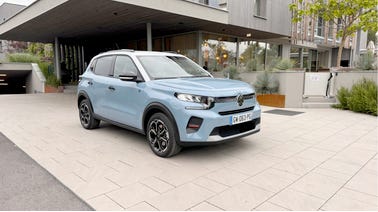I’ve traveled a lot in my life.
From Thailand, where I trained Muay Thai with some of the most bad-ass fighters on the planet, to Amsterdam, where I ate a space cake so powerful I was high for nearly two days, to Mexico, where I spent the summer attending an immersive Spanish language program and made out with a super hot Mexican girl who told me my eyes were “spectacular,” I am beyond grateful for all of my adventures.
But every time I travel to a new country, I always feel a tad bit inferior due to the fact that I’m not even close to multilingual, like most people in the world. This really hit me this week as pretty much every person in Mauritius speaks 3 languages, fluently: Creole, French, and English.
Certainly it’s helpful that most people here speak English, but the native language in Mauritius is Creole. I think it would be nice, just for once, to be able to speak to someone in their native tongue when visiting their country.
Of course, unlike the United States, where learning a foreign language seems like an afterthought, in most parts of the world, foreign languages are taught at a very early age. And it’s considered just as important as math, science, and history. It’s just part of a well-rounded education. And it’s something I wish our country took more seriously.
That being said, I do try to learn a few phrases anytime I go to a new country. The Latin-based languages, such as Spanish, French, and Italian tend to be the least-difficult to figure out. But Thai, Vietnamese, and any Scandinavian languages? Forget about it.
Here in Mauritius, nearly everyone speaks English, and the people are so kind about it, I don’t feel like a knuckle-dragging Neanderthal browsing the new iPhones at the Apple store. I even had a short conversation — in English — with a local about electric vehicles.
Yes, even when visiting a tropical paradise, I revert to electric car Geekdom. It’s a gift.
Anyway, the guy I was talking to was telling me about how he’s been seeing a lot more EVs on the roads these days. So of course, I had to find out why.
I actually broached the conversation after seeing my first BYD (OTCBB: BYDDY) in real life. If you recall, this is the EV company I wrote about in my article entitled: Make a Few Bucks from China’s Electric Car Dominance.
I believe it was the Sealion 7 model, which runs around $57,000 and delivers a range of around 310 miles per charge. Perfect for an island where most of the population only drives between 15 to 31 miles per day.
It’s a pretty decent looking car, too …
This is actually one of the pricier models in Mauritius. The most affordable BYD is the Dolphin Electric, which will set you back around $36,000. Given the average price for a new car in Mauritius is around $22,000, these electric cars are still quite pricey.
That being said, if you’re cool with a smaller car and can live with a 156-mile driving range (again, in a place where the average daily commute does not exceed 31 miles), you can get a Citroën ë-C3 for around $19,500.
It’s smaller than the Sealion, but given the fact that most of the local streets here are barely big enough to accommodate two cars at the same time (as you can see below), it’s actually not a bad option.
I’ve only seen about a half dozen EVs since I’ve been here, but there is evidence that EV sales are way up in Mauritius.
In 2012, there were only 3 electric vehicles in Mauritius. That’s not a misprint. Three!
In 2024, there were 2,794. That’s a CAGR (compound annual growth rate) of 76.7%.
To put that in perspective, in 2012, there were 50,116 registered passenger vehicles on the roads (EVs, hybrids, and conventional internal combustion, combined). In 2024, that number jumped to 710,605, representing a CAGR of 24.7%. That’s also quite massive, but in terms of CAGRs, EV ownership in Mauritius is growing 3 times as fast as conventional internal combustion and hybrid vehicle ownership. And no matter how you slice it, the best investment opportunities are always found in the growers, not the show-ers.
This kind of growth is similar to what we’re seeing all over the world, but it should be noted that the government of Mauritius is actively moving to get more EVs on the roads by instituting some very generous incentives, such as no import duties on electric cars ( which can run anywhere from 20% to 55%) and a 0.5% loan option to taxi and van operators for EV purchases.
The government is also keen to get more electric buses on its roads. Which is nice, considering I’ve seen less smoke pour out of Willie Nelson’s tour bus than I’ve seen come out of the back of these municipal buses. And for the record, I have seen Willie Nelson’s tour bus.
Last July, the Minister of Land Transport and Light Rail, Alan Ganoo, announced that an acquisition of 200 new electric buses had been negotiated between the Governments of Mauritius and India, with 100 buses provided as a grant and 100 through a line of credit. Given global supply restraints, I suspect it’ll be at least five years before these things are actually on the roads, but indeed, the wheels are in motion. Pun intended. :)
The government’s eagerness to “go electric” is laid out in a 10-year EV Integration Roadmap, which provides guidance on how to increase EV ownership from 1,200 in 2020 to 26,000 by 2030, and public charging stations from 40 to 800.
Not bad. Not bad at all!
What I’m reading …
Stellantis (NYSE: STLA) Signs Partnership Contract to Distribute EVs in Mauritius: https://www.media.stellantis.com/me-en/leapmotor/press/stellantis-signs-parnership-contract-with-abc-to-distribute-leapmotor-in-mauritius
India Car Giant, Tata Motors Enters Mauritius With its EV Portfolio: https://ackodrive.com/news/tata-motors-enters-mauritius-with-its-ev-portfolio/
BYD tops Tesla as the ‘top choice’ for EV brands in China, and it’s not even close: https://electrek.co/2025/05/28/byd-tops-tesla-as-top-choice-ev-brands-china/











